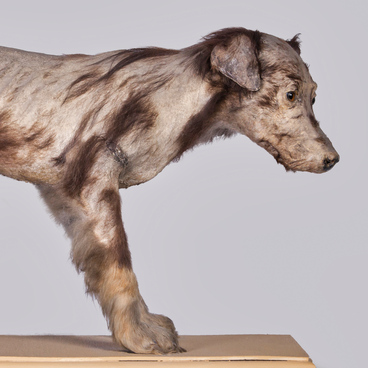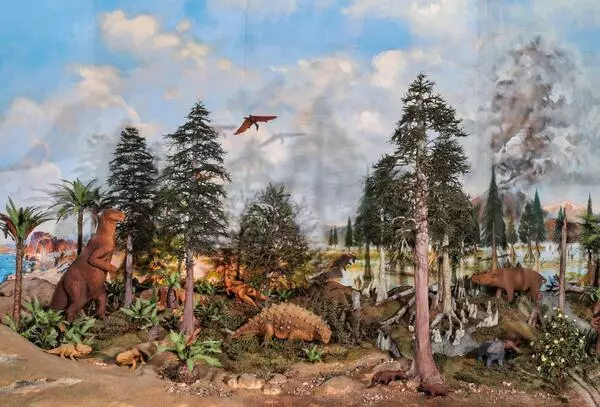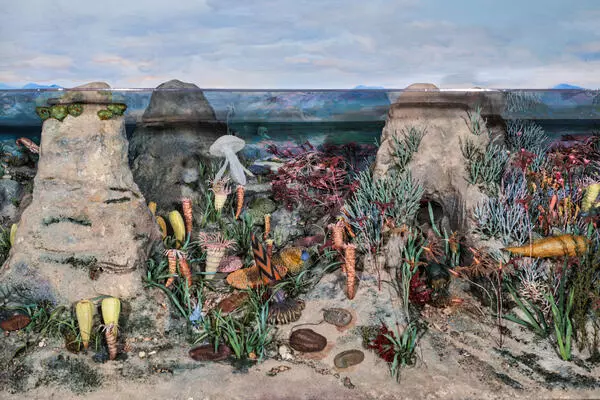The Jurassic period of the Mesozoic era began 201 million years ago. It got its name after the Jura mountain range in Central Europe.
At that time, the supercontinent Pangea began to separate into continents, and more shallow seas appeared. The climate became warm and comfortable, and subtropical forests started growing on the continents. The oxygen level in the air gradually increased. The shores of the lakes were covered with thickets of araucaria, ginkgo, and cycads.
The number of mammals was gradually increasing, but at that particular moment, they were represented mainly by small forms that resembled shrews. They hunted insects and worms at night and hid in burrows during the day.
In the Jurassic period, there were especially favorable conditions for the life of giant lizards. Herds of stegosaurs roamed the forests. To protect themselves from predators, they had bone plates on their backs, as well as spikes and spines on their tails. They were hunted by predatory dinosaurs, distant relatives of tyrannosaurs, kileskus.
The largest dinosaurs in the history of the Earth were sauropods. These include apatosaurus, brachiosaurus, and diplodocus. The weight of the brachiosaurus could reach 60 tons. These dinosaurs had huge internal organs, a stomach capable of digesting a large amount of plant food, and a very long neck. However, its jaws were small and weak to crush the necessary food. That is why brachiosaurs, like modern domestic chickens, swallowed stones along with plants. In the stomach, they were grinding food like millstones.
Among the predatory dinosaurs, small coelurosaurs, the ancestors of modern birds, were active. In addition, pterosaurs, flying lizards, have proliferated on the planet. Many of them ate fish and inhabited the shores of lakes and seas. Skulls and skeletons of these animals are found more often than others since the remains are better preserved as fossils near the water.
The most famous pterosaur was the pterodactyl. Pterodactylus antiquus was the first to be named and identified as a flying reptile. It hunted fish and small animals. The wings of the pterodactyl were formed by a skin-muscle membrane that stretched from the elongated fourth finger of the wing to the hind limbs. The wingspan of this pterosaur reached about a meter.
Archaeopteryx, a small, crow-sized, winged animal covered with feathers, also existed in the Jurassic period. The largest species of archaeopteryx reached 50 centimeters in length and weighed one kilogram. Archaeopteryx became an evolutionary lineage leading from lizard-like dinosaurs to birds, although its existence within this lineage is unclear. Depending on the researchers' point of view, it can be referred to both birds and reptiles.
The Jurassic period ended 145 million years ago with a slight climatic cooling, which lasted for more than 100 million years in the next period, the Cretaceous.
At that time, the supercontinent Pangea began to separate into continents, and more shallow seas appeared. The climate became warm and comfortable, and subtropical forests started growing on the continents. The oxygen level in the air gradually increased. The shores of the lakes were covered with thickets of araucaria, ginkgo, and cycads.
The number of mammals was gradually increasing, but at that particular moment, they were represented mainly by small forms that resembled shrews. They hunted insects and worms at night and hid in burrows during the day.
In the Jurassic period, there were especially favorable conditions for the life of giant lizards. Herds of stegosaurs roamed the forests. To protect themselves from predators, they had bone plates on their backs, as well as spikes and spines on their tails. They were hunted by predatory dinosaurs, distant relatives of tyrannosaurs, kileskus.
The largest dinosaurs in the history of the Earth were sauropods. These include apatosaurus, brachiosaurus, and diplodocus. The weight of the brachiosaurus could reach 60 tons. These dinosaurs had huge internal organs, a stomach capable of digesting a large amount of plant food, and a very long neck. However, its jaws were small and weak to crush the necessary food. That is why brachiosaurs, like modern domestic chickens, swallowed stones along with plants. In the stomach, they were grinding food like millstones.
Among the predatory dinosaurs, small coelurosaurs, the ancestors of modern birds, were active. In addition, pterosaurs, flying lizards, have proliferated on the planet. Many of them ate fish and inhabited the shores of lakes and seas. Skulls and skeletons of these animals are found more often than others since the remains are better preserved as fossils near the water.
The most famous pterosaur was the pterodactyl. Pterodactylus antiquus was the first to be named and identified as a flying reptile. It hunted fish and small animals. The wings of the pterodactyl were formed by a skin-muscle membrane that stretched from the elongated fourth finger of the wing to the hind limbs. The wingspan of this pterosaur reached about a meter.
Archaeopteryx, a small, crow-sized, winged animal covered with feathers, also existed in the Jurassic period. The largest species of archaeopteryx reached 50 centimeters in length and weighed one kilogram. Archaeopteryx became an evolutionary lineage leading from lizard-like dinosaurs to birds, although its existence within this lineage is unclear. Depending on the researchers' point of view, it can be referred to both birds and reptiles.
The Jurassic period ended 145 million years ago with a slight climatic cooling, which lasted for more than 100 million years in the next period, the Cretaceous.






